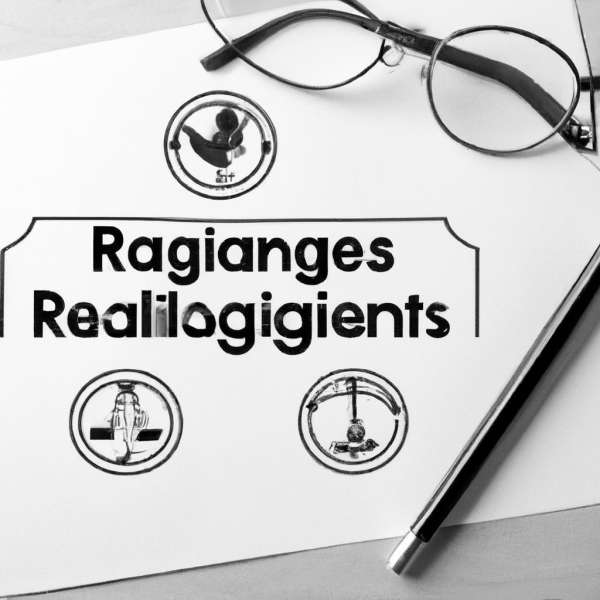The Transformation of Family Law: Addressing Contemporary Issues
The concept of family, deeply rooted in human history, has seen significant evolution over time. Traditionally defined by blood relations and conventional structures, the idea of family now includes a wide array of relationships and living arrangements. In this ever-changing environment, family law plays a crucial role, adapting to societal changes, cultural shifts, and the diverse needs of individuals. From marriage and divorce to child custody and adoption, the principles that govern family relationships have been continually challenged and redefined by modern circumstances. As we navigate the complexities of today’s relationships—characterized by increasing diversity, technological advancements, and evolving gender roles—understanding the progression of family law is vital. This article explores the historical roots of family law, the current challenges it faces, and the potential future directions to ensure justice and fairness for all families in a rapidly changing world.

Tracing the Historical Roots of Family Law
Family law has its origins in ancient civilizations where familial roles and relationships were primarily dictated by social norms and customs. In Roman times, family structures were patriarchal, while in medieval Europe, marriages often served to solidify alliances. Family law during these periods reflected societal values and served as a mechanism to regulate familial relationships. **Issues such as inheritance, guardianship, and legitimacy were crucial**, mainly benefiting the powerful and wealthy. The primary goal was to maintain order within the family unit and ensure the preservation of lineage and property rights.
As societies progressed, so did the complexity of family interactions. The Industrial Revolution brought about significant social changes, shifting the focus from collective family interests to individual rights. **Emerging concepts of personal freedom and gender equality began to influence legislation**, leading to the creation of laws that addressed the changing dynamics of marriage, divorce, and custody. This era marked a gradual shift towards more equitable treatment of individuals within the family, challenging traditional patriarchal norms.
In today’s society, family law faces numerous challenges that reflect diverse and evolving family structures. **The following factors highlight some of these modern issues**:
- Intersection of technology and privacy concerns in custody cases
- Recognition of non-traditional family units, such as same-sex partnerships
- The impact of globalization on custody disputes across borders
- Ongoing debates surrounding reproductive rights and parental responsibilities
These emerging issues indicate that as societal values continue to evolve, family law must adapt to accommodate new realities, ushering in an era where inclusivity and equity are at the forefront of legal principles.

Adapting to Technological Advancements in Family Dynamics
The integration of technology into our daily lives has not only changed how families communicate but has also fundamentally altered the structure of family dynamics. With the advent of digital platforms and social networks, the way family members interact has evolved, introducing new methods of connection while also creating new barriers. Modern families often navigate a landscape filled with both opportunities and challenges brought about by technological advancements.
- Shift in Communication: The immediacy of texting and video calls allows for quicker connections but can reduce the depth of face-to-face interactions.
- Remote Presence: Virtual family gatherings enable distant relatives to participate, yet may lead to a sense of disengagement among those physically present.
- Privacy Concerns: The pervasive nature of social media raises issues regarding family privacy, particularly for children and teenagers.
Furthermore, these changes extend into areas that intersect with family law. The modern family, shaped by technology, faces issues related to custody arrangements, digital parenting, and even virtual property disputes. For example, how do courts define parental responsibilities in a world where the boundaries between work, home, and online life are increasingly blurred? These evolving circumstances require legal systems to adapt swiftly, striving to protect families while recognizing the significant role technology plays in their lives.
| Technological Impact | Effect on Family Dynamics |
|---|---|
| Social Media | Facilitates connections but may also lead to jealousy and misunderstandings. |
| Smart Devices | Encourages shared experiences but can result in distracted interactions. |

Navigating Modern Complexities: Balancing Rights and Responsibilities
In today’s family law landscape, the interplay between rights and responsibilities forms a complex web. As societal norms shift, it becomes crucial to reassess and balance individual rights with communal duties. This balancing act often feels like walking a tightrope, where emphasizing one aspect may inadvertently overshadow the other.
**Addressing these complexities requires a comprehensive approach, including:**
- Defining legal parameters of family units clearly.
- Handling the intricacies of custody arrangements in non-traditional family structures.
- Encouraging collaborative parenting methods that focus on the child’s welfare.
- Utilizing technology to aid mediation and conflict resolution.
Moreover, new challenges such as the rise of digital communication and its impact on privacy and parental responsibility underscore the need for strong frameworks. Understanding how shared digital platforms can either enhance or complicate family dynamics is essential. Courts are increasingly tasked with not only determining legal outcomes but also fostering environments where both rights and responsibilities are upheld, ensuring justice is served in practice, not just on paper.
| Right | Responsibility |
|---|---|
| Right to seek custody | Responsibility to ensure the child’s best interest |
| Right to manage assets | Responsibility to disclose assets during divorce proceedings |
| Right to enter agreements | Responsibility to fulfill contractual obligations |
As family law continues to evolve, the ongoing dialogue around rights and responsibilities will play a crucial role in shaping future legal interpretations. Striking the right balance is not merely an exercise in legal theory but a reflection of our collective values as a society, ensuring that every individual’s rights are protected while also emphasizing the duties we owe to one another in the fabric of family life.

Future Directions: Recommendations for Progressive Family Law Reform
As society continues its rapid transformation, the field of family law must evolve to reflect the diverse structures and needs of contemporary families. To create a more equitable and responsive framework, several pivotal recommendations can be implemented:
- Recognizing Diverse Family Structures: Legal frameworks should be adjusted to accommodate various family configurations, including single-parent households, same-sex partnerships, and blended families. This recognition could enhance visibility and rights for all family types.
- Embracing Technology: The adoption of technology in family law, such as virtual mediation sessions and digital documentation, can streamline processes, making them more accessible and user-friendly for families navigating legal issues.
- Promoting Mediation and Collaborative Practices: Shifting focus from adversarial approaches to mediation and collaboration can foster healthier resolutions, reducing emotional strain on families. Programs that emphasize these methods could be established to train legal professionals.
- Implementing Comprehensive Education Programs: Targeted educational initiatives for parents regarding legal rights and parenting options post-separation could empower individuals to make informed decisions, ultimately leading to better outcomes for children.
In addition to these recommendations, evaluating current legislation through the lens of social justice is essential. A periodic review could reveal systemic inequities that persist in family law, allowing for timely reforms that promote fairness and inclusion. For example, creating a task force to analyze and recommend adjustments based on real-world data and trends could provide a structured path forward.
| Recommendation | Benefit |
|---|---|
| Legal recognition of diverse family structures | Enhanced rights and protections for all families |
| Integrating Technology in Legal Procedures | Enhanced Accessibility and Efficiency |
| Emphasis on Mediation | Healthier and Less Adversarial Conflict Resolution |
| Parental Education Programs | Empowered Decision-Making for Improved Child Outcomes |
Key Insights
As we wrap up our discussion on the evolution of family law and the contemporary challenges it faces, it becomes evident that this field not only mirrors societal values and beliefs but also evolves with the complexities of human relationships. From redefining marriage and parenthood to the intricacies of custody arrangements and the impact of technology, family law is positioned at the crossroads of tradition and change.
Looking ahead, it is crucial to stay alert and adaptable, acknowledging that change is the only constant. Lawmakers, practitioners, and families must navigate the shifting landscape with empathy and understanding, ensuring that the legal framework accommodates the diverse realities of modern family life.
In the pursuit of balance and fairness, one thing remains clear: the ongoing conversation about family law will reflect our society—a testament to our progress and our continuous quest for justice in intimate relationships. As we move forward, may we face the challenges with open hearts and minds, fostering a legal system that not only upholds rights but also strengthens the bonds that unite us.
Family Law Unveiled: Navigating Modern Challenges and Transformations
Modern Challenges in Family Law
Changing Family Dynamics
The structure of families has evolved significantly, presenting unique challenges in the realm of family law. Today’s families often include single parents, cohabitating partners, same-sex couples, and blended families. These diverse arrangements require adaptation in legal frameworks, making it crucial for family law to evolve accordingly.
Child Custody and Support Issues
Child custody and support issues remain a predominant aspect of family law. With changing social norms and increased parental involvement, courts now place greater emphasis on co-parenting and joint custody arrangements. The best interest of the child is paramount, requiring careful consideration of various factors in custody and support rulings.
Domestic Violence
Domestic violence cases pose a critical challenge in family law. Legal professionals must navigate complex cases that involve physical, emotional, and psychological abuse. Ensuring the safety of victims while balancing fair legal representation is vital in these situations.
Transformations in Family Law
Technological Advancements
Technology has revolutionized family law, offering new tools for legal practitioners and clients. Online mediation, virtual courtrooms, and digital documentation streamline processes, making legal proceedings more efficient and accessible.
Legislative Changes
Recent legislative changes reflect the evolving nature of society. Marriage equality laws, updates to child support guidelines, and protective measures for domestic violence victims are just a few examples of how legislation is transforming family law to meet contemporary needs.
Mediation and Alternative Dispute Resolution (ADR)
Mediation and ADR methods are becoming increasingly popular, offering amicable solutions outside of court. This approach not only saves time and money but also reduces emotional strain on families.
Key Areas of Family Law
Divorce and Separation
Divorce and separation cases require expertise in various aspects, including property division, spousal support, and custody arrangements. Legal professionals provide essential guidance to ensure fair and equitable resolutions.
Adoption
Adoption law facilitates the legal process of adding a new member to a family. It encompasses domestic and international adoptions, requiring strict adherence to legal protocols to protect the rights of all parties involved.
Prenuptial and Postnuptial Agreements
These agreements outline asset distribution and financial arrangements in the event of a divorce or separation. While once considered unromantic, they are now seen as practical tools for financial planning and protection.
Benefits and Practical Tips
Engaging a Family Law Attorney
- Fast and efficient resolution
- Expert guidance through complex legal processes
- Protection of rights and interests
Practical Tips
- Maintain clear communication with your attorney
- Stay informed about legal changes and updates
- Document all relevant information thoroughly
Case Studies
Case Study: Mediation Success
In a recent mediation case, a couple managed to reach a mutually amicable agreement regarding child custody and asset division. This approach not only expedited the process but also minimized the emotional strain on both parties and their children.
Case Study: Domestic Violence Protection
A domestic violence victim successfully obtained a protective order through swift legal intervention. The case underscored the importance of legal awareness and prompt action in safeguarding victims.
First-Hand Experience
Sharing Stories from Clients
Many clients have shared their experiences navigating challenges in family law. From complex custody battles to amicable separations, these stories highlight the pivotal role of legal expertise and emotional support.
Legal Resources
Access to comprehensive legal resources is crucial for anyone involved in family law matters. Below is a table outlining key resources that can provide valuable information and support.
| Resource | Description | URL |
|---|---|---|
| American Bar Association (ABA) | Comprehensive legal information and resources | americanbar.org |
| Child Welfare Information Gateway | Resources on child welfare and adoption | childwelfare.gov |
| National Domestic Violence Hotline | Support and resources for domestic violence victims | thehotline.org |


